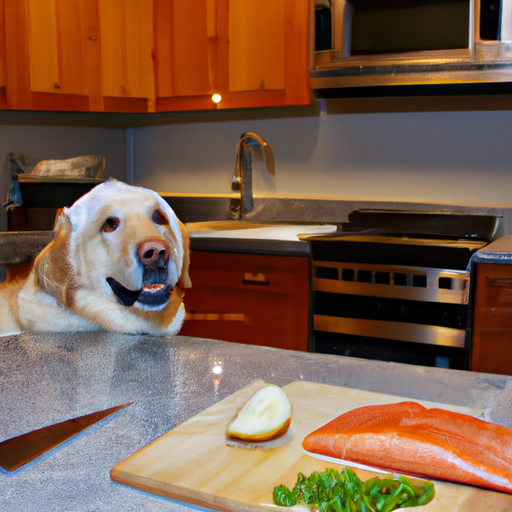H2: Understanding the Benefits of Salmon for Dogs
You might be wondering why you should even consider cooking salmon for your dog. Well, it’s not just about giving your furry friend a treat. It’s about ensuring they get the best nutrition possible. Salmon is packed full of omega-3 fatty acids which are great for your dog’s skin, coat, immune system, and heart health. It’s also a high-quality source of protein which is essential for muscle development and energy.
H2: Selecting the Right Salmon
When choosing the salmon for your dog, there are a few things you need to consider:
-
Freshness: The fresher the salmon, the better. Fresh salmon has a firm texture and a vibrant color, and it doesn’t have a strong fishy smell.
-
Type of Salmon: Wild-caught salmon is preferred over farmed salmon because it’s typically lower in toxins and higher in nutrients.
-
Size: Choose a size of salmon that’s appropriate for your dog’s size. A small dog will need less salmon than a large dog.
Here is a table to help you determine the right portion size for your dog:
| Dog Size | Salmon Portion |
|---|---|
| Small (10-20 lbs) | 1 ounce |
| Medium (20-50 lbs) | 2 ounces |
| Large (50+ lbs) | 3 ounces |
H2: Preparing the Salmon
Once you’ve selected the perfect salmon, it’s time to prepare it. Here’s a simple recipe you can follow:
- Preheat your oven to 350°F (175°C).
- Place the salmon on a baking tray lined with parchment paper.
- Drizzle a little olive oil over the salmon and sprinkle with a pinch of salt.
- Bake the salmon for 20-25 minutes, or until it flakes easily with a fork.
Remember, dogs’ taste buds are different from ours, so avoid using seasonings that could be harmful to them, like garlic or onion powder.
H2: Serving the Salmon
Now that you’ve cooked the salmon, you’re ready to serve it. Before you do, make sure you:
- Allow the salmon to cool down completely. You don’t want your dog to burn their mouth.
- Remove any bones. Even small bones can pose a choking hazard or damage your dog’s digestive tract.
- Cut the salmon into bite-sized pieces that are appropriate for your dog’s size.
Remember, even though salmon is packed full of nutrients, it shouldn’t make up more than 10% of your dog’s diet.
H2: Storing the Salmon
If you have leftover salmon, it’s important to store it properly to avoid spoilage. Place the salmon in an airtight container and refrigerate it. It will keep for 2-3 days.
FAQ
Q: Can I give my dog raw salmon?
A: No, raw salmon can contain parasites that are harmful to dogs. Always cook salmon before feeding it to your dog.
Q: Can dogs eat salmon skin?
A: Yes, dogs can eat salmon skin. However, make sure it’s properly cooked and free of any seasonings.
Q: How often can I feed my dog salmon?
A: Salmon should be an occasional treat, not a daily part of your dog’s diet. Once or twice a week is enough.
Q: Can all dogs eat salmon?
A: Most dogs can eat salmon without any problems. However, some dogs might be allergic to fish. If your dog has never had salmon before, start with a small amount and watch for any adverse reactions.
Remember, you’re not just a pet owner, you’re a caregiver. And cooking salmon for your dog is one way you can show your love and commitment to their health and happiness.



